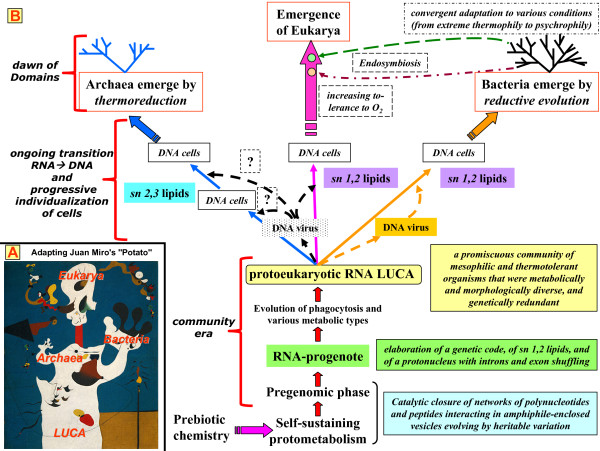Figure 2.
Birth and legacy of the Last Universal Common Ancestor (LUCA). A large, evolving and promiscuous community stretches in time from the origins to the immediate precursors of the three Domains (and perhaps of many other ones, presumably abortive). (A) The "sprouting tuber" analogy [49], illustrated by Juan Miro's "Potato" [Copyright: The Metropolitan Museum of Art, New York, New York, USA. The Potato (1928) by Joan Miró (Spanish, 1893–1983). Oil on canvas; 39 3/4 × 32 1/8 in. (101 × 81.6 cm). Jacques and Natasha Gelman Collection, 1998 (1999.363.50). © 2000 Artists Rights Society (ARS), New York/ADAGP, Paris]; (B) Progression from the inorganic to self-replicating entities via a qualitative jump to complexity by catalytic closure, and further to cells with a DNA genome. The diagram illustrates the proposition that viruses originate from a cellular precursor [45] and that viruses are responsible for the RNA-DNA transition in Bacteria on one side and Archaea/Eukarya on the other [11,12,44]. The exact branching order is not specified (see [44,45] and text). See text for details of the sn1,2→sn2,3 lipids transition. The onset and course of the reductive evolution leading to Archaea or Bacteria are not indicated in detail. We conceive of this process as having occurred in several steps, more a succession of evolutionary crises than a gradual transformation; it involved the emergence of cells with membranes fully competent in electron-transport-driven energy harnessing and the RNA-DNA transition.

